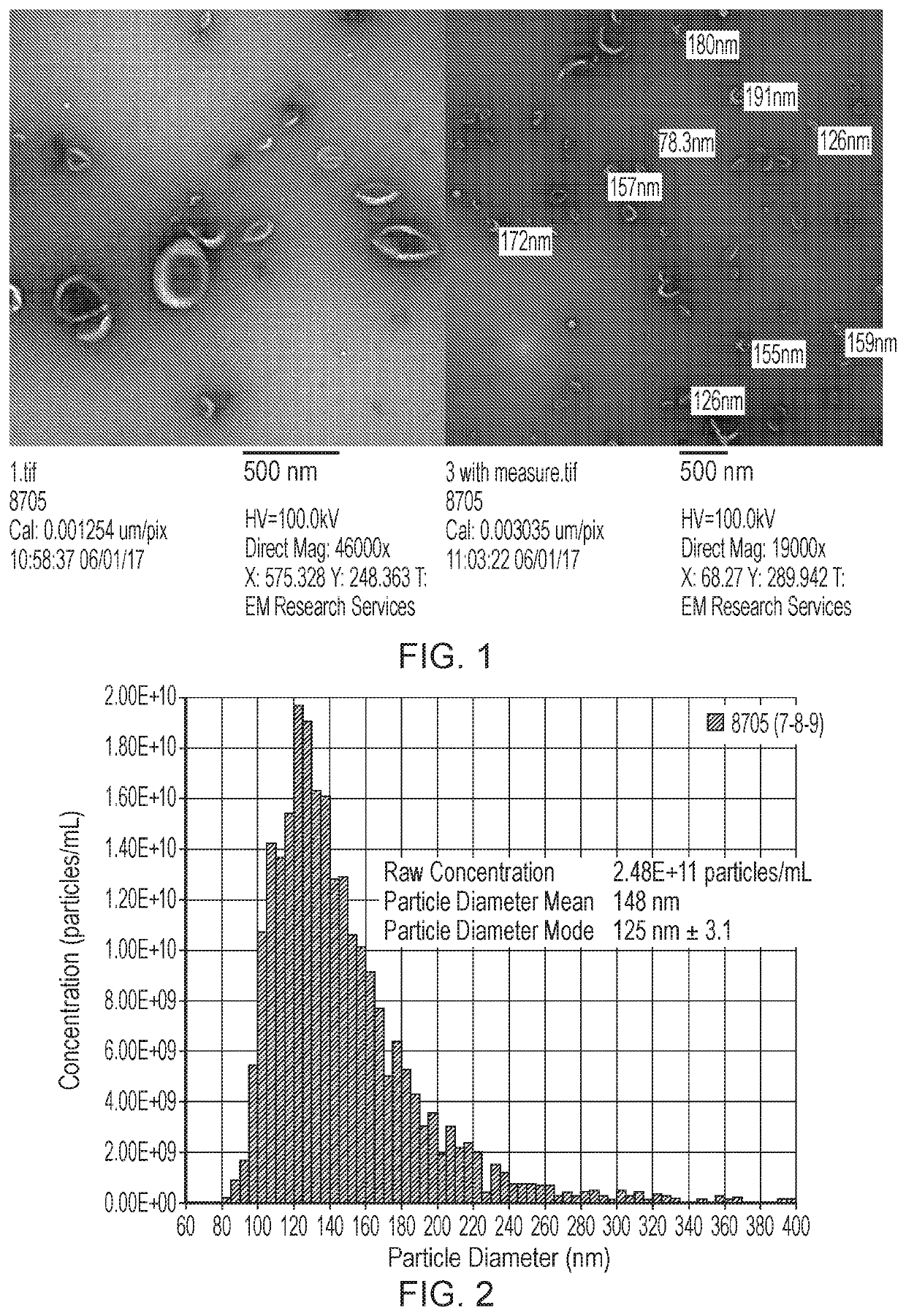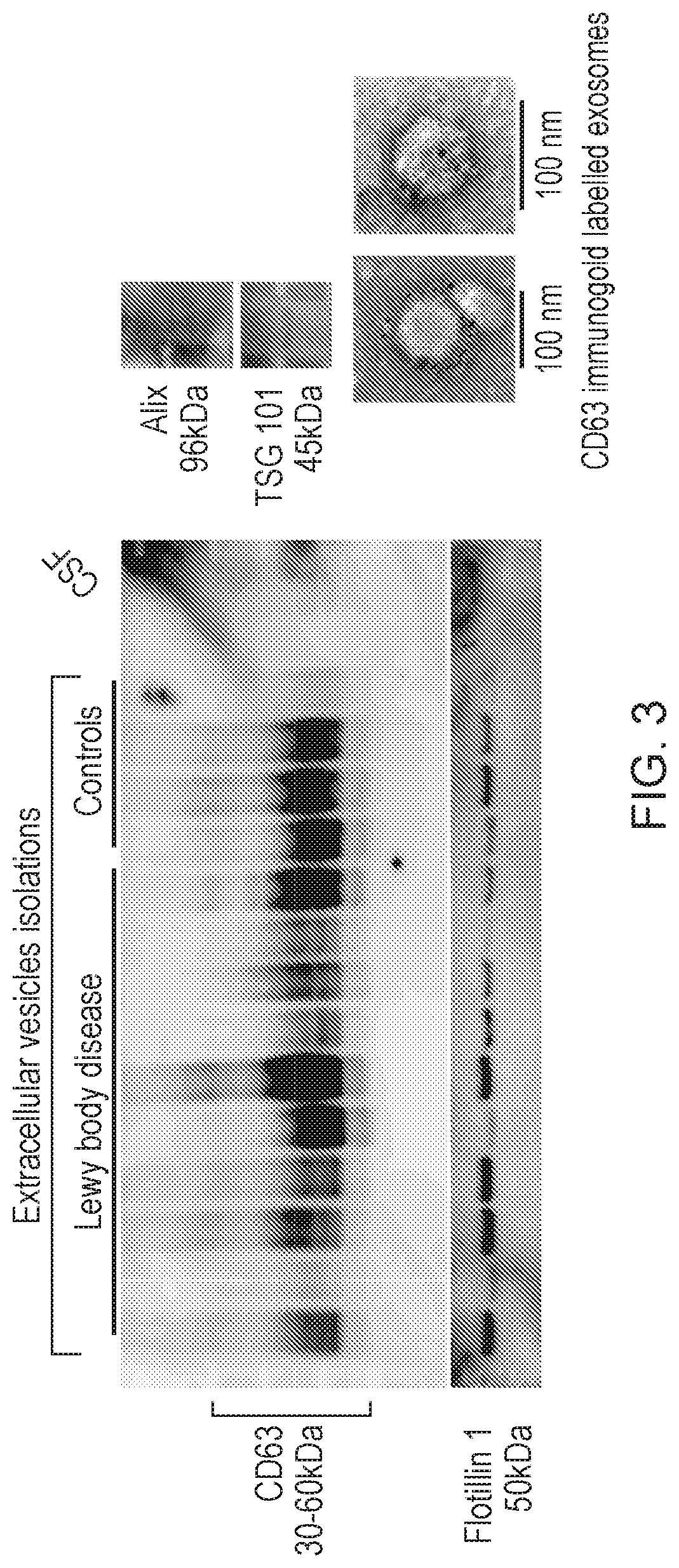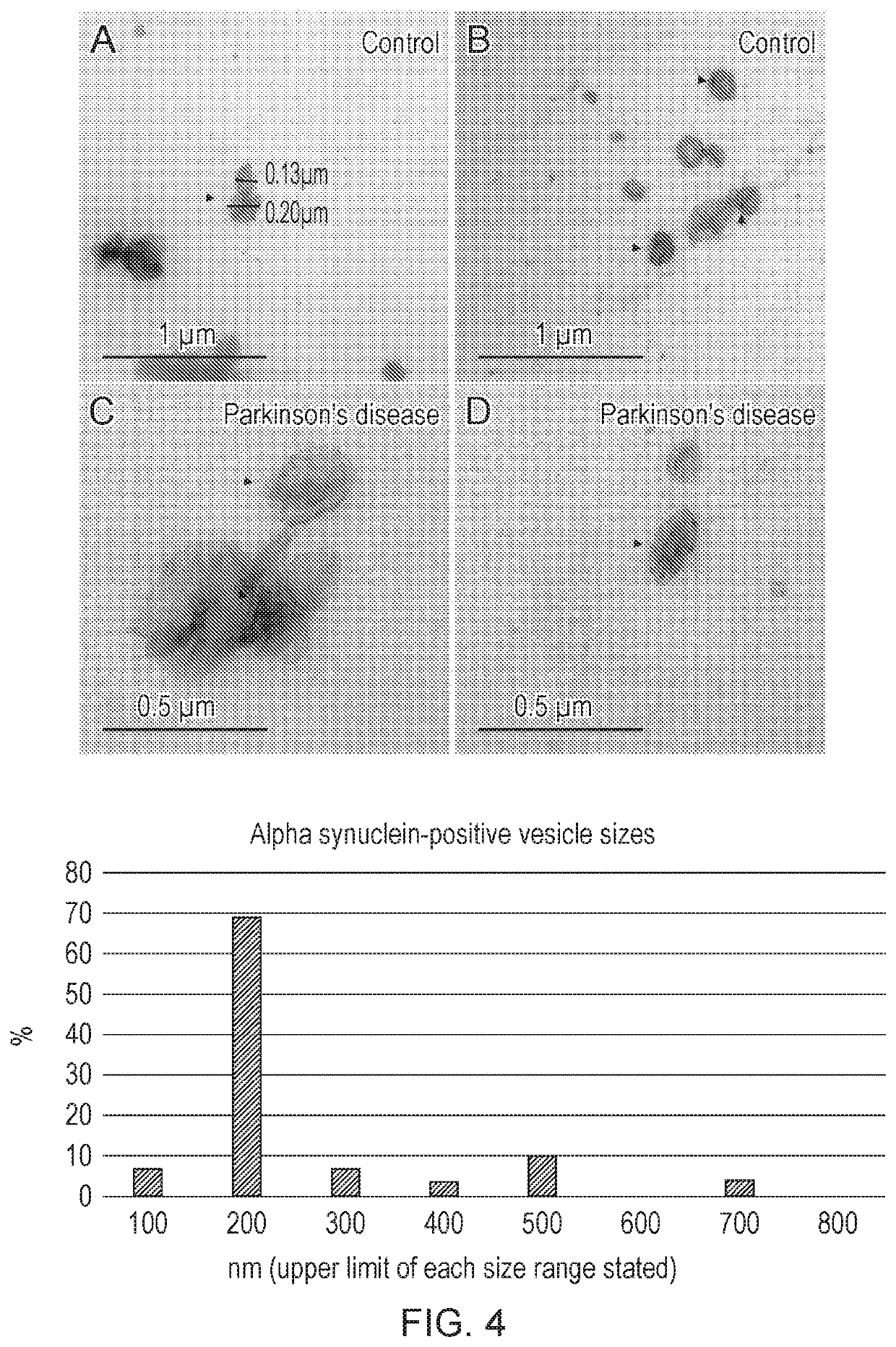Detection of pathological protein aggregation
a protein and detection technology, applied in the field of detection of pathological protein aggregation, can solve the problems of affecting the identification of affected individuals at early stages of disease prior to clinical symptoms, lack of widely accepted, reliable, sensitive and objective molecular diagnostic methods, and less flexible thinking. , to achieve the effect of reducing the risk of developing diseas
- Summary
- Abstract
- Description
- Claims
- Application Information
AI Technical Summary
Benefits of technology
Problems solved by technology
Method used
Image
Examples
examples
[0209]The data presented herein show that by combining the use of extracellular vesicles and the RTQUIC method, the sensitivity of the method in detecting the pathological protein aggregation is increased.
[0210]The inventors have tested extracellular vesicles purified from post-mortem cerebrospinal fluid, plasma and platelets using a routine RTQUIC assay and the sensitivity of the assay in detecting alpha-synuclein pathology is significantly increased compared to the use of raw (not purified) specimen.
Initial Analyses
[0211]15 samples of post-mortem cerebrospinal fluid (11 Parkinson's disease+dementia with Lewy bodies (synucleinopathies) and 4 controls). All cases clinically and neuropathologically validated.
[0212]Extracellular vesicles were purified from all cases using size exclusion chromatography. Vesicles were then analysed by tunable resistive pulse sensing (TRPS) for their size and concentration (FIGS. 1 and 2), and Western blot and immuno-electron microscopy for the presence ...
PUM
 Login to view more
Login to view more Abstract
Description
Claims
Application Information
 Login to view more
Login to view more - R&D Engineer
- R&D Manager
- IP Professional
- Industry Leading Data Capabilities
- Powerful AI technology
- Patent DNA Extraction
Browse by: Latest US Patents, China's latest patents, Technical Efficacy Thesaurus, Application Domain, Technology Topic.
© 2024 PatSnap. All rights reserved.Legal|Privacy policy|Modern Slavery Act Transparency Statement|Sitemap



